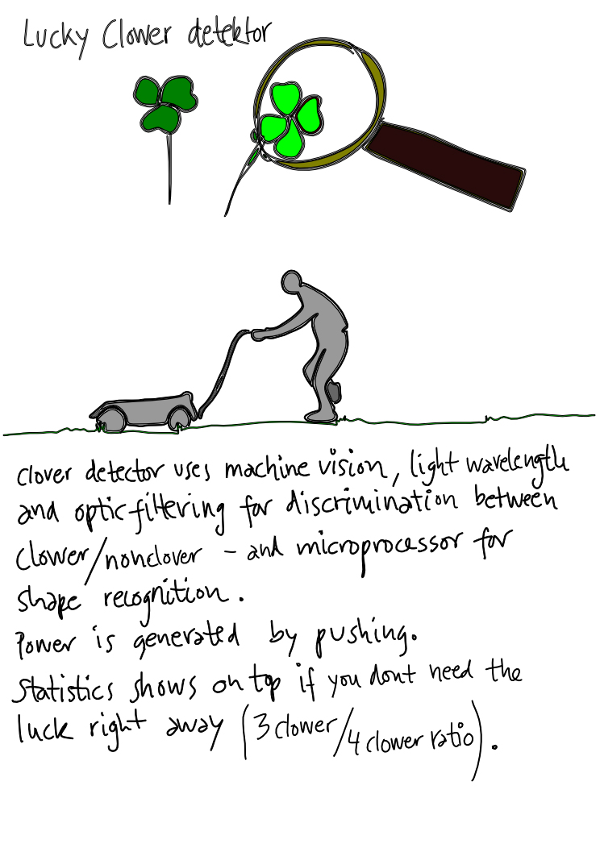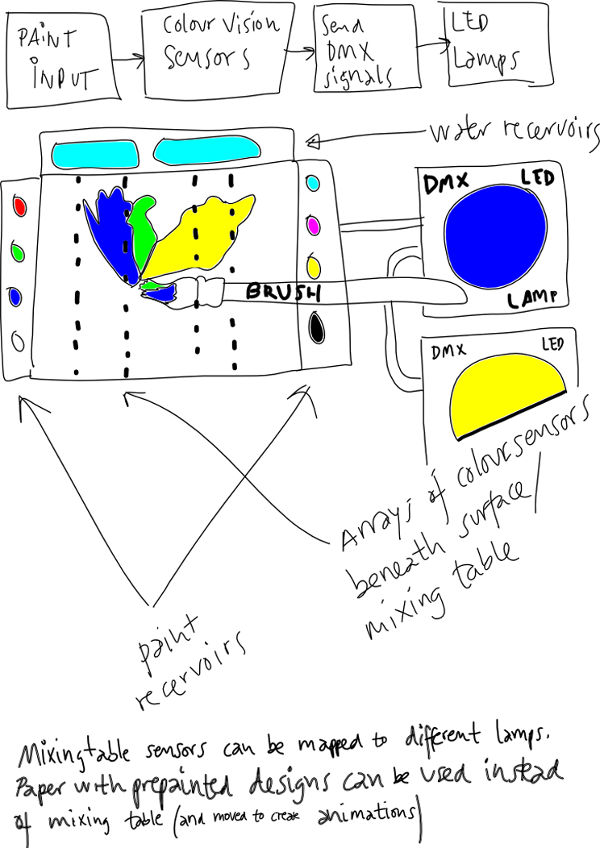Fab Academy 2013 · Michael Hviid Nielsen
Waag Society's Fablab in Amsterdam
· Lecture 01: Principles and Practices. Project Management
Lecture 01: Jan 23, 2013
Assignments: Sketch/2D/3D Model/Render/Animate your Final
Project
Ramblings:
I have had a tough time deciding which project to choose for my Final Project. I have brought a stack of ideas with me to Amsterdam from the idea drawer. Some of them are quite old and someone else have had the same ideas as some of them in the mean time - but followed through and made it real (learning project management will hopefully help me a bit with this problem in the future). Some of the technical ones are unrealistic to develop during the course weeks, some are outright improbable to work. Like "bricks" inter-communicating via static electricity gained from the surface they sit on or produced internally. Communication would be using an Internet 0 (OI) style protocol (guess which book I had just read; spoiler: Fab (N. Gershenfeld; 2005)) the power of tx/rx should come from the static electricity itself. Obvious reasons for this not to work: static events and microcontrollers as well as the processing speed necessary to chop up ESD events in smaller pieces required for communication. The Oeuvre of this would of course be to shrink such a technology into the micro- or nano domain.
Enough:
So until now I have narrowed it down to these two proposals which fulfills my requirements of being able to implement most of the classes taught on Fab Academy this year. Also they are not too serious themselves but the technology needed to make them work will also work for a lot of other stuff I could imagine making afterwards. And they emphasis the interaction and obvious contrast between the physical "analog" world (Things) and the digital world (Data).
Proposals:
Lucky Clover Detector: "DO push your luck"

I envision a four-leafed clover (aka "lucky clover") detector
wrapped-up in what is the design-metaphor of a hand-pushed
lawnmower.
It would probably use some form of moving image digitization,
wavelength discrimination between clover/non-clover and
shape-recognition as well as some kind of visual and/or
audible output in case of detection. Hopefully pushing the
device generates enough power for it to be self contained.
Obvious pitfalls; cost of optic filters and sensor as well as computing strength necessary to keep up with the data generated by at least slow walking speed.
Course classes possibly untouched upon by choosing this
proposal:
Interface and Application Programming?
Embedded Networking and Communications?
Analog method of controlling DMX LED lamps: "myAquaDMX"

I envision a controller for controlling a setup of DMX controlled LED lights by mixing paint live and grabbing the colors and intensity "realtime" alternately loading prepainted papers onto the controller representing scene-setups of the LED lamps and making it possible to animate live though a set of prepainted light fixture states.
Ideally the whole surface should be a sensor and mapping of the individual lamps made easy for non-technically inclined people. A simplification could involve the use of discrete sensors in fixed, marked locations on/underneath the surface.
Possible pitfalls: keeping cost of the colorsensors down while ensuring that their colorspectrum is wide enough for that of the lamps as well as how to match those two colourscapes by software/hardware encoding.
Course classes possibly untouched upon by choosing this
proposal:
3D Scanning and Printing?
Output Devices?
Embedded Networking and Communications?